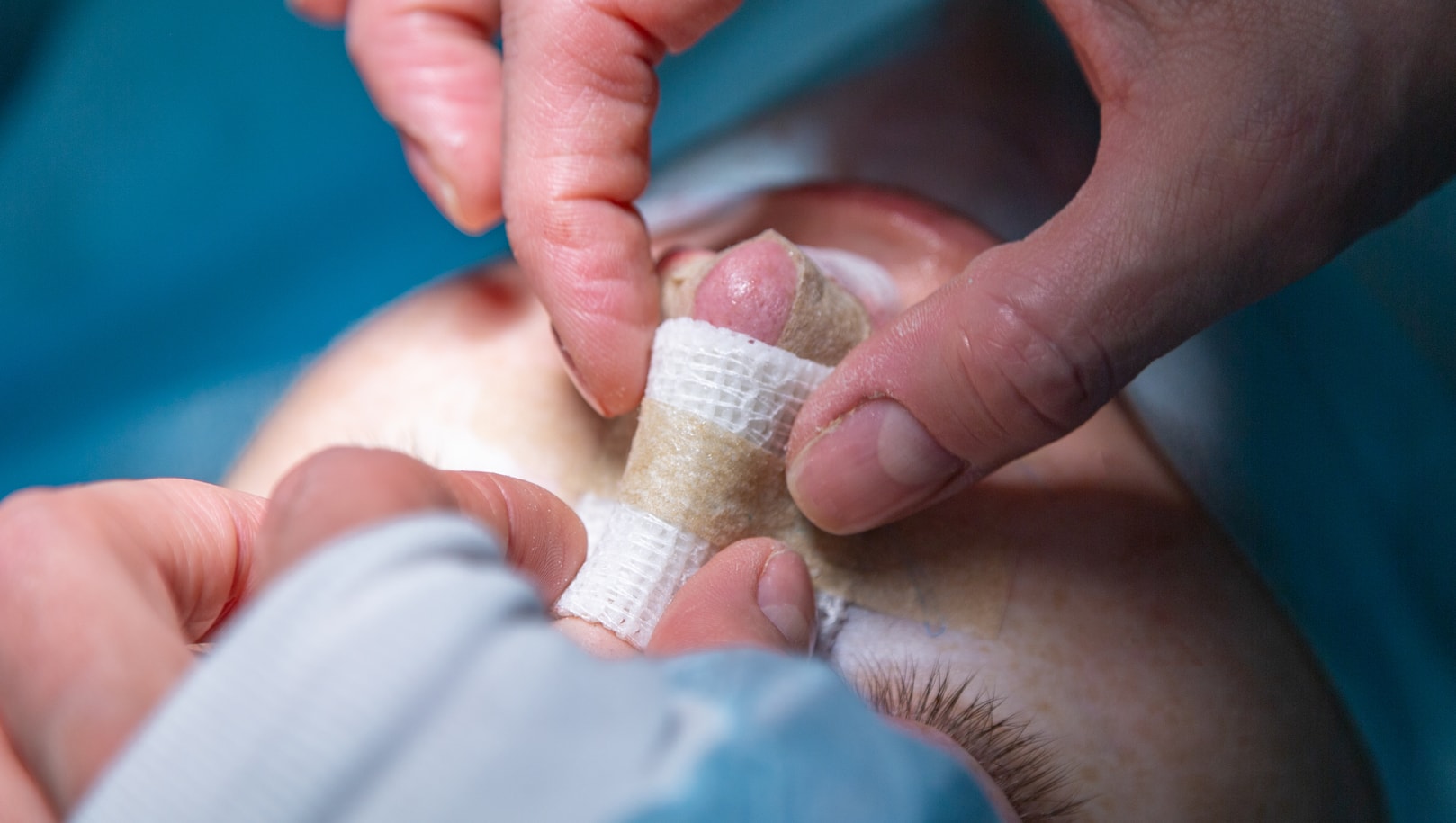
Nasal bridge augmentation, otherwise known as dorsal augmentation, pertains to a surgical procedure meant to increase the height of the bridge of the nose to make it look more defined. There are two main ways to augment the nasal bridge. The first is by using the patient’s own cartilage and the other is through the use of implants. The cartilage may be obtained from other areas such as the nasal septum, back of the ear, and ribs. Implants, on the other hand, are primarily made from silicone although other types of implants are also available if the patient does not like silicone implants.
Using the patient’s own cartilage is generally the preferred method of doing nasal bridge augmentation. The advantage is that it is the patient’s own tissue so the chance of infection is less. The disadvantage is that it can warp or twist over time. Nasal and ear cartilage may shrink by about 20% to 30% while it is 10% for rib cartilage. Warping or twisting does not occur with implants. Implants are permanent and usually look much better but the risk of infection is higher. The problem with silicone implants is that they can extrude over time and may not be natural-looking at times.
Nasal bridge augmentation is usually done on Asians, African-Americans, and anyone who has what doctors call platyrrhine or flat nose. The reason why patients want to augment the bridge is to make their nose look better and more defined. In Asian countries, surgeons prefer to use a lot of silicone implants. In the United States, most doctors use a type of implant called Medpor. Medpor is best used in thick-skinned patients like Asians and African-Americans. This implant is not recommended for thin-skinned patients because of the higher risk of infection. Thin-skinned patients are better off using their own cartilage.
Nasal bridge augmentation is not exclusively done in Asians or African-Americans. Certain Caucasians may also require it after they have had some kind of injury. The procedure may also be done as part of revision rhinoplasty in patients who underwent a nose job (particularly if their bridge was made too low). In such situations, the surgeon will augment their bridge to make it higher and more natural-looking.
Surgery aside, there are also non-invasive options for nasal bridge augmentation. The most popular involves the use of dermal fillers. But, just like augmentation using cartilage, the results are not permanent. Fillers can move and usually dissolve within six months. Patients who want more reliable results should choose surgical bridge augmentation.
The limitation of nasal bridge augmentation greatly depends on the elasticity of the skin. If the skin is stretched too much, the blood supply will be compromised. The limitations are determined on an individual basis. Skin elasticity determines how much the nasal bridge can be augmented. On the average, it can go from 2 to 5 millimeters.
Any type of bridge augmentation rhinoplasty carries complications which may include swelling and infection. Other complications which happen very rarely include movement and extrusion of implants or grafts.
There are things that surgeons can do to prevent these rare complications and make the nose look more natural. One is through a so-called interposition soft graft. Between the implant and the skin, the surgeon can use the fascia of the temporalis muscle on the forehead and put it between the cartilage and the bridge. If grafts are used, a soft material called Alloderm will help make the edges of the graft look more sculpted. The surgeon may custom-sculpt an implant or graft using powered instrumentation. Carving with a knife is not preferred as it may cause a sharp edge. Powered instruments give the implant or graft a much smoother edge.
After surgical nasal bridge augmentation, patients are advised to take a week off from work or school because of the post-operative swelling and bruising. The patient can still get some air through the nose but the swelling will cause the ability to breathe through the nose to be less effective while swollen.
A splint will be put on the nose after the operation. This splint comes off a week later. After that, it will take a year to see the final results. The patient will look presentable within a week or two. The results are pretty permanent and should last for a very long time.
Nasal bridge augmentations do not usually require any touch-up or maintenance procedures unless something happens to the graft or implant. The most common reasons for follow-up treatments or revisions are movement, extrusion, or infection.
Surgeries to reshape and improve the appearance of the nose are some of the most commonly performed cosmetic operations worldwide. This is due to the fact that the nose is the center of the face and many people are very conscious of its shape. Some may find their nose too big, too small, or having a specific characteristic they do not like. There are a lot of cosmetic surgeries that can be done to correct the problem. All surgeries come with complications so patients should only consider undergoing one if they are genuinely unsatisfied with the appearance of their nose.
Written by Cosmetic Town Editorial Team- AA
Based on an exclusive interview with Sam Rizk, MD in New York, NY